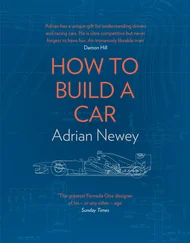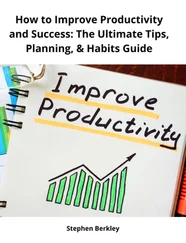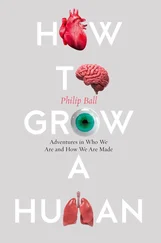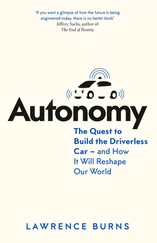Eyal, Nir - Hooked - How to Build Habit-Forming Products
Здесь есть возможность читать онлайн «Eyal, Nir - Hooked - How to Build Habit-Forming Products» весь текст электронной книги совершенно бесплатно (целиком полную версию без сокращений). В некоторых случаях можно слушать аудио, скачать через торрент в формате fb2 и присутствует краткое содержание. Год выпуска: 2014, Издательство: Nir Eyal, Жанр: Старинная литература, на английском языке. Описание произведения, (предисловие) а так же отзывы посетителей доступны на портале библиотеки ЛибКат.
- Название:Hooked: How to Build Habit-Forming Products
- Автор:
- Издательство:Nir Eyal
- Жанр:
- Год:2014
- ISBN:нет данных
- Рейтинг книги:5 / 5. Голосов: 1
-
Избранное:Добавить в избранное
- Отзывы:
-
Ваша оценка:
- 100
- 1
- 2
- 3
- 4
- 5
Hooked: How to Build Habit-Forming Products: краткое содержание, описание и аннотация
Предлагаем к чтению аннотацию, описание, краткое содержание или предисловие (зависит от того, что написал сам автор книги «Hooked: How to Build Habit-Forming Products»). Если вы не нашли необходимую информацию о книге — напишите в комментариях, мы постараемся отыскать её.
Hooked: How to Build Habit-Forming Products — читать онлайн бесплатно полную книгу (весь текст) целиком
Ниже представлен текст книги, разбитый по страницам. Система сохранения места последней прочитанной страницы, позволяет с удобством читать онлайн бесплатно книгу «Hooked: How to Build Habit-Forming Products», без необходимости каждый раз заново искать на чём Вы остановились. Поставьте закладку, и сможете в любой момент перейти на страницу, на которой закончили чтение.
Интервал:
Закладка:
[xxxiii] “Bing Your Brain: Test, Then Test Again.” Accessed December 16, 2013. http://www.bing.com/blogs/site_blogs/b/search/archive/2013/02/06/bing-your-brain-test-then-test-again.aspx
[xxxiv] “comScore Releases September 2013 U.S. Search Engine Rankings.” comScore, Inc. Accessed November 12, 2013. http://www.comscore.com/Insights/Press_Releases/2013/10/comScore_Releases_September_2013_US_Search_Engine_Rankings.
[xxxv] “Amazon Product Ads” Amazon. Accessed November 12, 2013. http://services.amazon.com/content/product-ads-on-amazon.htm/ref=as_left_pads_apa1#!how-it-works
[xxxvi] Trifts, Valerie, and Gerald Häubl. “Information Availability and Consumer Preference: Can Online Retailers Benefit from . . .” In Journal of Consumer Psychology, 149–159, 2003.
[xxxvii] “More Retailers at Risk of Amazon ‘Showrooming’.” Bits Blog. Accessed December 16, 2013. http://bits.blogs.nytimes.com/2013/02/27/more-retailers-at-risk-of-amazon-showrooming/.
[xxxviii] Stone, Brad. The Everything Store: Jeff Bezos and the Age of Amazon. Little, Brown and Company, 2013.
[xxxix] Lally, Phillippa, Cornelia H. M. van Jaarsveld, Henry W. W. Potts, and Jane Wardle. “How Are Habits Formed: Modelling Habit Formation in the Real World.” European Journal of Social Psychology 40, no. 6 (2010): 998–1009. doi:10.1002/ejsp.674.
[xl] Offit, Paul A. “Don’t Take Your Vitamins.” The New York Times, June 8, 2013, sec. Opinion / Sunday Review. http://www.nytimes.com/2013/06/09/opinion/sunday/dont-take-your-vitamins.html.
Chapter 2: Trigger
[xli] Accessed November 12, 2013. http://instagram.com/press/
[xlii] Perlroth, Somini Sengupta, Nicole, and Jenna Wortham. “Instagram Founders Were Helped by Bay Area Connections.” The New York Times, April 13, 2012, sec. Technology. http://www.nytimes.com/2012/04/14/technology/instagram-founders-were-helped-by-bay-area-connections.html.
[xliii] “Twitter ‘Tried to Buy Instagram before Facebook’.” Telegraph.co.uk, April 16, 2012, sec. twitter. http://www.telegraph.co.uk/technology/twitter/9206312/Twitter-tried-to-buy-Instagram-before-Facebook.html.
[xliv] Schwartz, Barry. The Paradox of Choice. New York: ECCO, 2004.
[xlv] Masters, Blake. “Blakemasters.com.” Peter Thiel’s CS183: Startup - Class 2 Notes Essay, April 6, 2012. http://blakemasters.com/post/20582845717/peter-thiels-cs183-startup-class-2-notes-essay.
[xlvi] Katikalapudi, R., S. Chellappan, F. Montgomery, D. Wunsch, and K. Lutzen. “Associating Internet Usage with Depressive Behavior Among College Students.” IEEE Technology and Society Magazine 31, no. 4 (2012): 73–80. doi:10.1109/MTS.2012.2225462.
[xlvii] Chellappan, Sriram, and Raghavendra Kotikalapudi. “How Depressed People Use the Internet.” The New York Times, June 15, 2012, sec. Opinion / Sunday Review. http://www.nytimes.com/2012/06/17/opinion/sunday/how-depressed-people-use-the-internet.html.
[xlviii] “Twitter Founder Reveals Secret Formula for Getting Rich Online | Wired Business | Wired.com.” Wired Business. Accessed November 12, 2013. http://www.wired.com/business/2013/09/ev-williams-xoxo/.
[xlix] “How the ‘Failure’ Culture of Startups Is Killing Innovation | Wired Opinion | Wired.com.” Wired Opinion. Accessed November 12, 2013. http://www.wired.com/opinion/2013/09/why-do-research-when-you-can-fail-fast-pivot-and-act-out-other-popular-startup-cliches/.
[l] “The Power of User Narratives: Jack Dorsey (Square).” Video. Entrepreneurial Thought Leaders Lecture. Stanford University, 2011. http://ecorner.stanford.edu/authorMaterialInfo.html?mid=2644.
[li] “What is Customer Development.” Startup Lessons Learned by Eric Reis. Accessed November 12, 2013. http://www.startuplessonslearned.com/2008/11/what-is-customer-development.html
[lii] “Empathy Map.” The k12 Lab Wiki. Accessed November 12, 2013. https://dschool.stanford.edu/groups/k12/wiki/3d994/Empathy_Map.html
[liii] “5 Whys.” Wikipedia, the Free Encyclopedia, November 12, 2013. http://en.wikipedia.org/w/index.php?title=5_Whys&oldid=581315459.
[liv] For more on the need for social belonging, see: Fiske, Susan T. Social Beings: a Core Motives Approach to Social Psychology. Hoboken, NJ: J. Wiley, 2010.
Chapter 3: Action
[lv] “What Causes Behavior Change?.” BJ Fogg’s Behavior Model. Accessed November 12, 2013. http://www.behaviormodel.org/
[lvi] Deci, Edward L., and Richard M. Ryan. “Self-determination Theory: A Macrotheory of Human Motivation, Development, and Health.” Canadian Psychology/Psychologie Canadienne 49, no. 3 (2008): 182–185. doi:10.1037/a0012801.
[lvii] “Barack Obama ‘Hope’ Poster.” Wikipedia, the Free Encyclopedia, November 5, 2013. http://en.wikipedia.org/w/index.php?title=Barack_Obama_%22Hope%22_poster&oldid=579742540.
[lviii] Hauptly, Denis J. Something Really New: Three Simple Steps to Creating Truly Innovative Products. New York, NY u.a.: AMACOM, 2007.
[lix] “Twitter Founder Reveals Secret Formula for Getting Rich Online | Wired Business | Wired.com.” Wired Business. Accessed November 12, 2013. http://www.wired.com/business/2013/09/ev-williams-xoxo/.
[lx] Lunden, Ingrid. “Analyst: Twitter Passed 500M Users In June 2012, 140M Of Them In US; Jakarta ‘Biggest Tweeting’ City.” TechCrunch. Accessed November 12, 2013. http://techcrunch.com/2012/07/30/analyst-twitter-passed-500m-users-in-june-2012-140m-of-them-in-us-jakarta-biggest-tweeting-city/.
[lxi] “What Causes Behavior Change?.” BJ Fogg’s Behavior Model. Accessed November 12, 2013. http://www.behaviormodel.org/
[lxii] Rao, Leena. “Twitter Seeing 90 Million Tweets Per Day, 25 Percent Contain Links.” TechCrunch. Accessed November 12, 2013. http://techcrunch.com/2010/09/14/twitter-seeing-90-million-tweets-per-day/.
[lxiii] Worchel, Stephen, Jerry Lee, and Akanbi Adewole. “Effects of Supply and Demand on Ratings of Object Value.” Journal of Personality and Social Psychology 32, no. 5 (1975): 906–914. doi:10.1037/0022-3514.32.5.906.
[lxiv] Weingarten, Gene. “Pearls Before Breakfast.” The Washington Post, April 8, 2007. http://www.washingtonpost.com/wp-dyn/content/article/2007/04/04/AR2007040401721.html.
[lxv] Plassmann, Hilke, John O’Doherty, Baba Shiv, and Antonio Rangel. “Marketing Actions Can Modulate Neural Representations of Experienced Pleasantness.” Proceedings of the National Academy of Sciences 105, no. 3 (January 22, 2008): 1050–1054. doi:10.1073/pnas.0706929105.
[lxvi] Nunes, Joseph, and Xavier Dreze. The Endowed Progress Effect: How Artificial Advancement Increases Effort. SSRN Scholarly Paper. Rochester, NY: Social Science Research Network. Accessed November 12, 2013. http://papers.ssrn.com/abstract=991962.
[lxvii] “List of Cognitive Biases.” Wikipedia, the Free Encyclopedia, November 12, 2013. http://en.wikipedia.org/w/index.php?title=List_of_cognitive_biases&oldid=581363450.
[lxviii] Anderson, Stephen P. Seductive Interaction Design: Creating Playful, Fun, and Effective User Experiences. Berkeley, CA: New Riders, 2011.
Chapter 4: Variable Reward
[lxix] Olds, J., & Milner, P. (1954). Positive reinforcement produced by electrical stimulation of the septal area and other regions of rat brain. Journal of Comparative and Physiological Psychology, 47, 419–427.
[lxx] Knutson, Brian, G Elliott Wimmer, Camelia M Kuhnen, and Piotr Winkielman. “Nucleus Accumbens Activation Mediates the Influence of Reward Cues on Financial Risk Taking.” Neuroreport 19, no. 5 (March 26, 2008): 509–513. doi:10.1097/WNR.0b013e3282f85c01.
[lxxi] Ramachandran, V. S. A Brief Tour of Human Consciousness: From Impostor Poodles to Purple Numbers. New York: Pi Press, 2004.
[lxxii] Pessiglione, Mathias, Ben Seymour, Guillaume Flandin, Raymond J. Dolan, and Chris D. Frith. “Dopamine-dependent Prediction Errors Underpin Reward-seeking Behaviour in Humans.” Nature 442, no. 7106 (August 31, 2006): 1042–1045. doi:10.1038/nature05051.
Читать дальшеИнтервал:
Закладка:
Похожие книги на «Hooked: How to Build Habit-Forming Products»
Представляем Вашему вниманию похожие книги на «Hooked: How to Build Habit-Forming Products» списком для выбора. Мы отобрали схожую по названию и смыслу литературу в надежде предоставить читателям больше вариантов отыскать новые, интересные, ещё непрочитанные произведения.
Обсуждение, отзывы о книге «Hooked: How to Build Habit-Forming Products» и просто собственные мнения читателей. Оставьте ваши комментарии, напишите, что Вы думаете о произведении, его смысле или главных героях. Укажите что конкретно понравилось, а что нет, и почему Вы так считаете.












